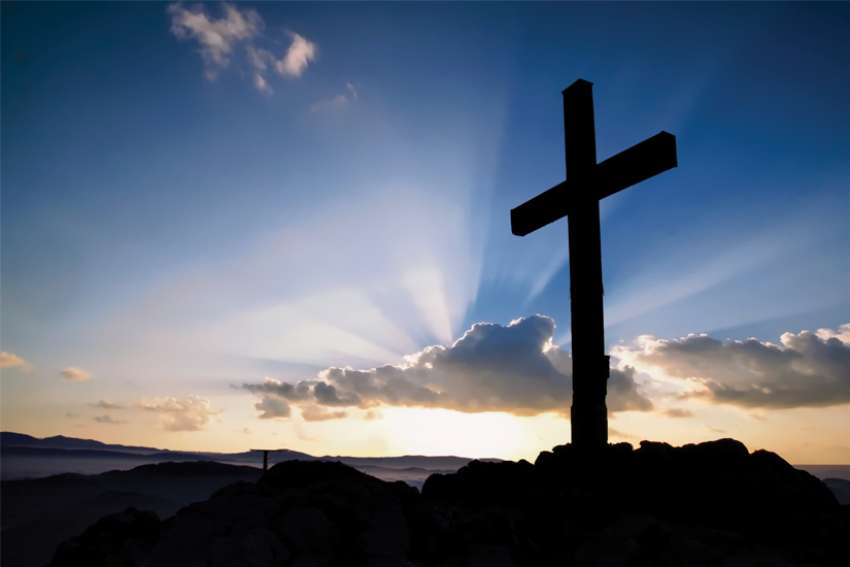Three years ago, a severe storm destroyed the cross standing on the topmost part of Our Lady of Peace Church. Several parishioners expressed their feelings about the absence of the cross on our church building. They shared with me that they saw the cross at the top of the church as a beacon of light — the light of life that illuminated not only the life of the community but also the larger community. The absence of the cross took away that light of life.
This week, our Lenten journey brings us to Good Friday — the celebration of the Passion of the Lord. On this special day, the cross becomes our focus. On Good Friday we remember the death of Jesus on the cross.
Death is not something that we take delight in talking about. When we hear of death, there is sadness and there is grief. Death surpasses our understanding. In the document, The Pastoral Constitution of the Church in the Modern World of the Second Vatican Council, Gaudium et Spes (Joy and Hope), the Church talks about the mystery of death: “In the face of death the enigma of human existence reaches its climax. Man is not only the victim of pain and the progressive deterioration of his body; he is also, and more deeply, tormented by the fear of final extinction” (18).
However, on Good Friday we remember that Jesus, though He was in the form of God, He emptied Himself, became obedient to the point of death — death on a cross (Philippians 2).
We celebrate Good Friday in a spirit of austerity, humility and penance. Due to the COVID-19 pandemic lockdown and its restrictions, this year our preparation and the celebration of Good Friday may be different. Traditionally, the atmosphere in our churches is unique and entirely different from any other day. The cross and statues are veiled from the Vigil of the Fifth Sunday of Lent. After the celebration of the evening Mass of the Lord’s Supper on Holy Thursday, the Blessed Sacrament is transferred to a Place of Reposition, the tabernacle is empty, the altar is left bare, holy water basins at the doors are removed and there is no access to votive candles.
The absence of these external signs leads us to focus on the redemptive act of Christ. On Good Friday, there is a feeling of absence of light and life in the church. As an external sign of the sacrifice of Jesus, the celebrant wears red vestments symbolizing passion and blood. In some African cultures the faithful treat Good Friday as a day of mourning and grief. They wear red or black clothes traditionally reserved for funeral ceremonies. They also observe grieving practices of their cultures.
This year, a very important part of the Good Friday service, the Rite of Adoration (Veneration) of the Holy Cross, may be different. Traditionally, we are given the opportunity to venerate the cross either by genuflecting or making a sign of reverence in front of the cross. This solemn ritual can be a time of self-reflection, a time of discernment, when we recognize the deeper meaning of the cross as the heart of the Christian message.
This is the time to ask God to awaken in our hearts our response to the call to imitate in our lives the suffering of Jesus (1 Peter 2). We live cross-centred lives through our actions based on our faith — a faith that is revealed in our love of God and neighbour. When we strive to embrace the cross for the sake of others, we express our gratitude to God who “so loved the world that He gave His only-begotten Son, so that everyone who believes in Him may not perish but have eternal life” (John 3:16).
Remembering the death of Jesus is a time for us to remember our brothers and sisters who have died from wars, famine, disasters and sickness. In a special way we remember those who have died from COVID-19. This time of pandemic has been very challenging to us: The lockdown with its restrictions has further challenged some of our beliefs, attitudes and customs towards death.
During the pandemic, people have died alone and the traditional celebration of the funeral Mass has been restricted. As a community, we have mourned in isolation because as parishioners we have not had the opportunity to come around to express a fitting farewell to parishioners who have died. There have been reports from around the world of mass burials, and people have not been able to grieve as they had wanted.
However, Good Friday’s celebration offers us hope. The cross, “the power of God” (1 Corinthians 1), holds out this promise of hope to our deceased brothers and sisters. According to the teaching of the Church, “our victory over death has been gained for us by the risen Christ, who by His own death has freed us from death” (Gaudium et Spes, 22).
Our Lenten journey is towards the joy of Easter. Our Lenten journey to Good Friday will not be complete without the Easter joy.
It is from the desolation of today that we look toward the Resurrection event in which the cross offers us hope, instead of despair, courage instead of fear, strength instead of weakness and the promise of a new life in the Spirit of God.
(Fr. Acheampong is pastor at Our Lady of Peace Parish in Toronto.)


